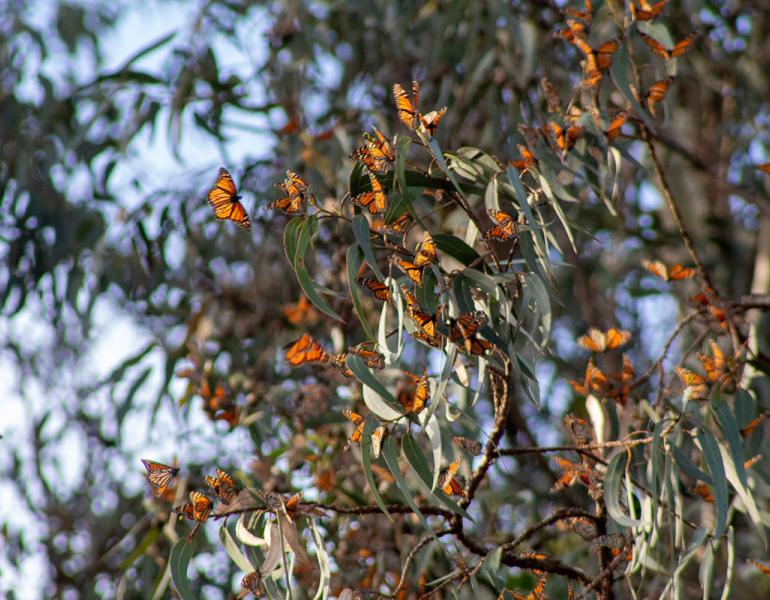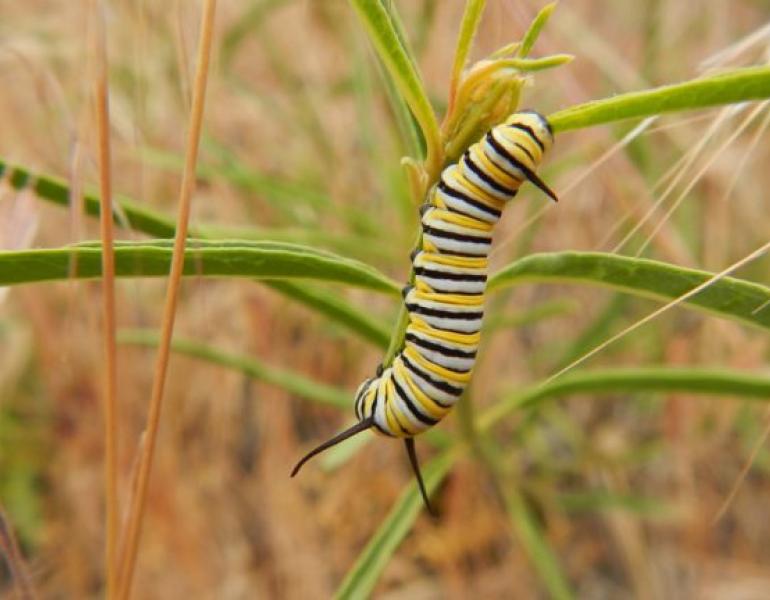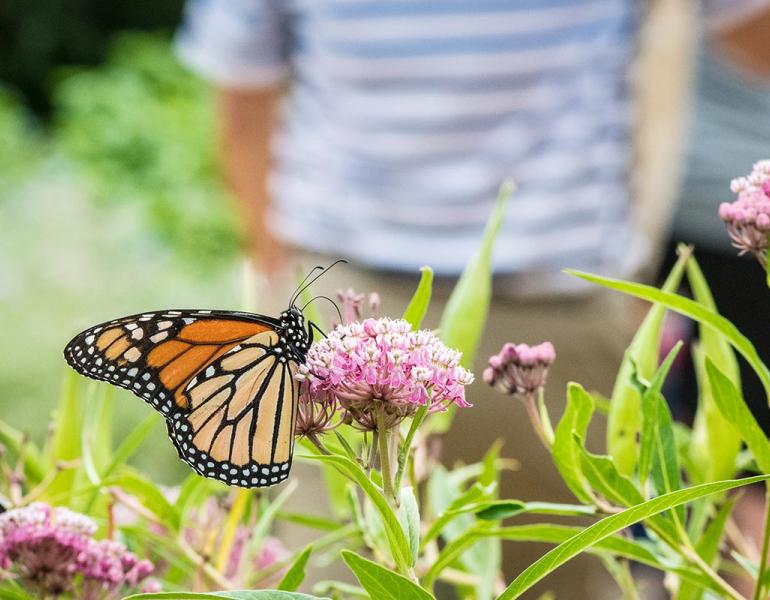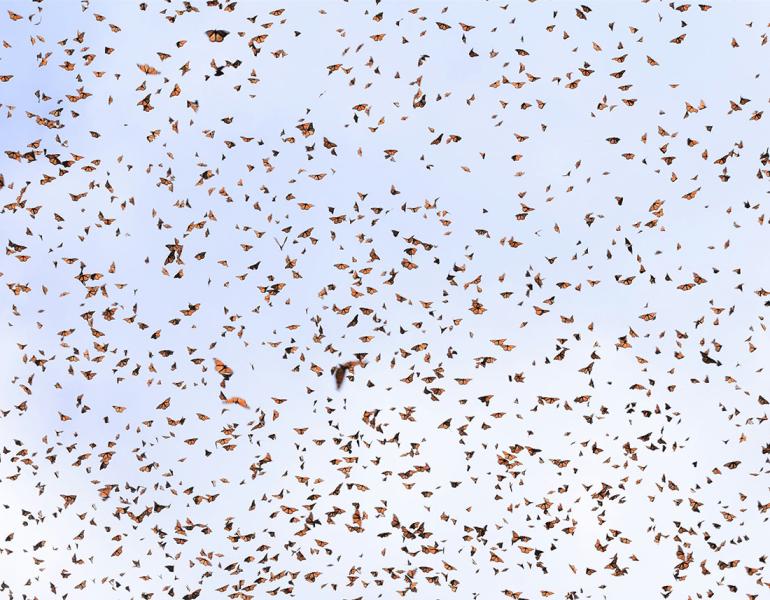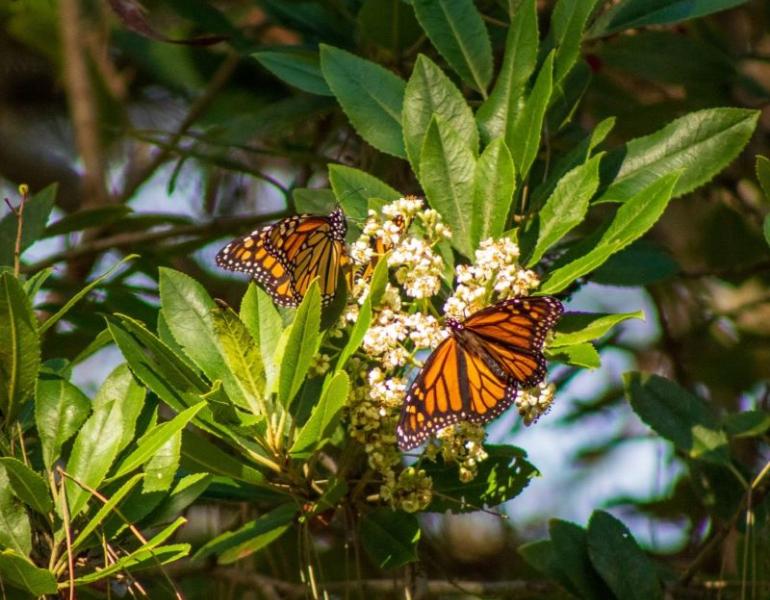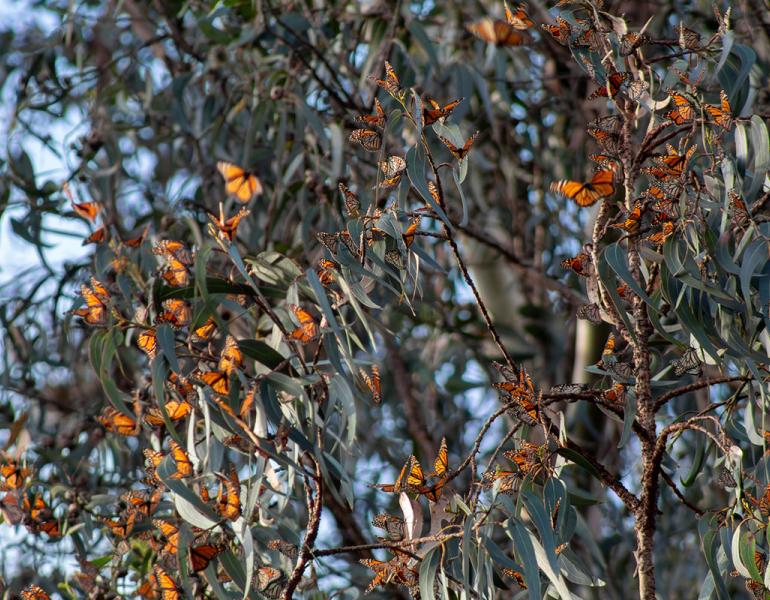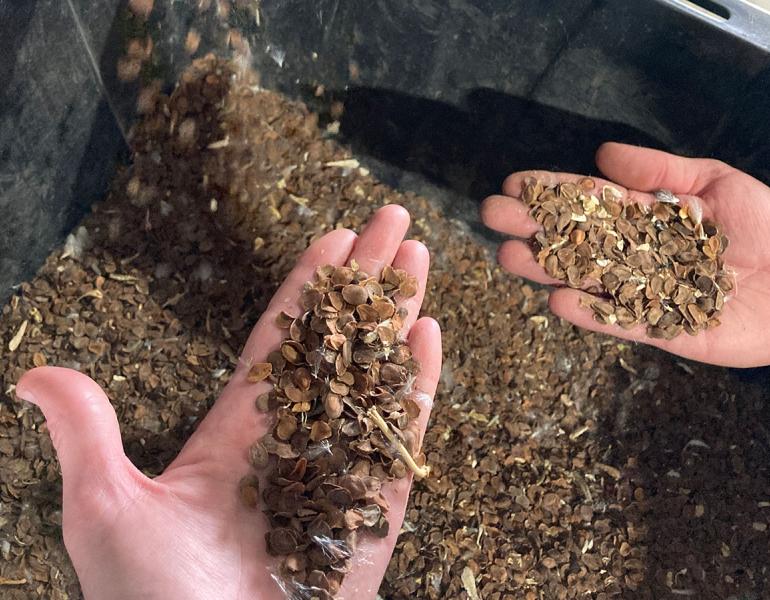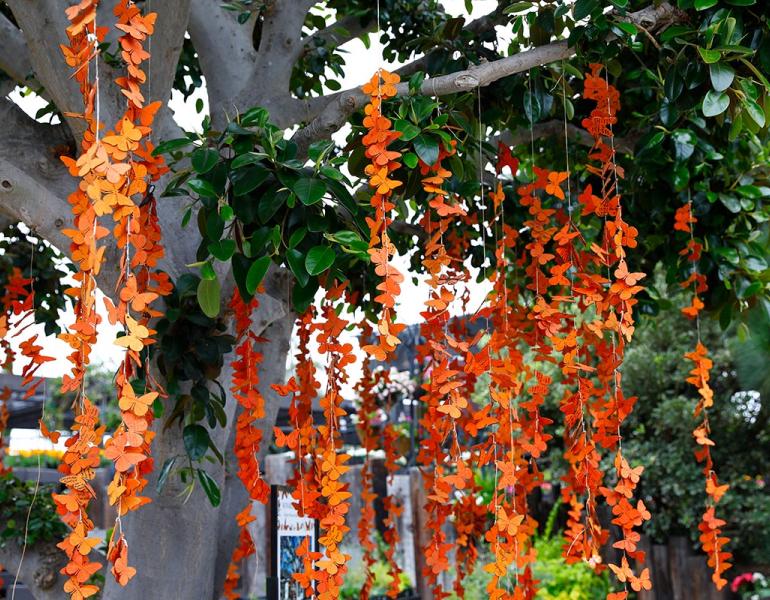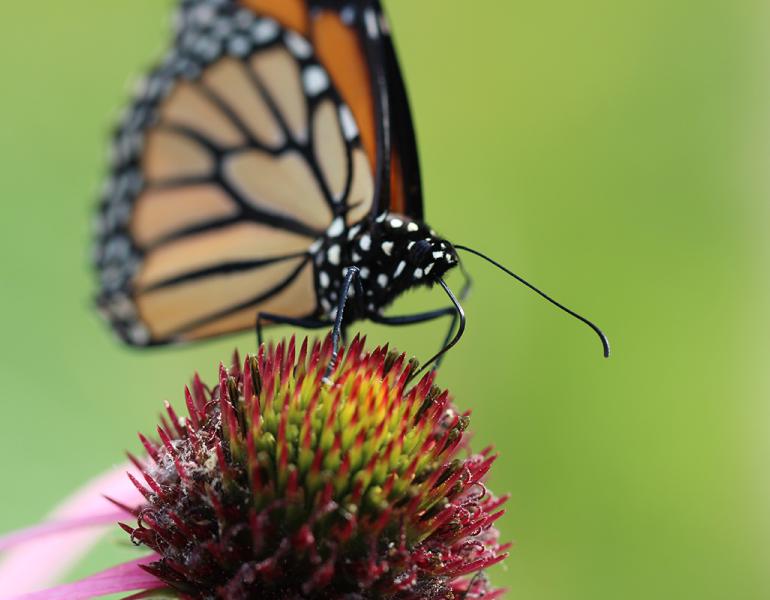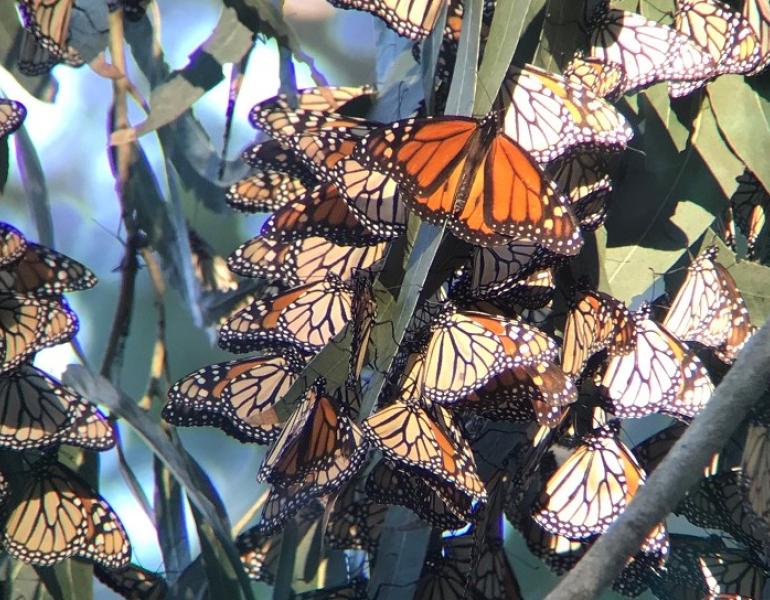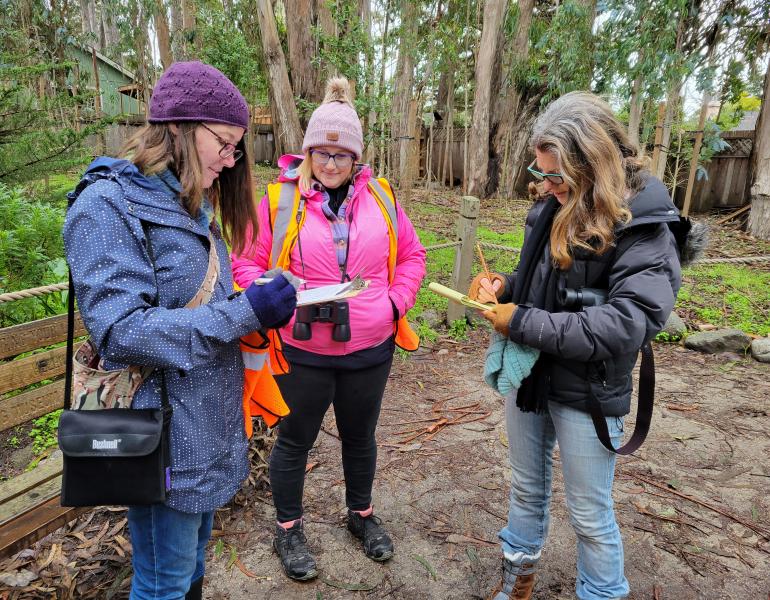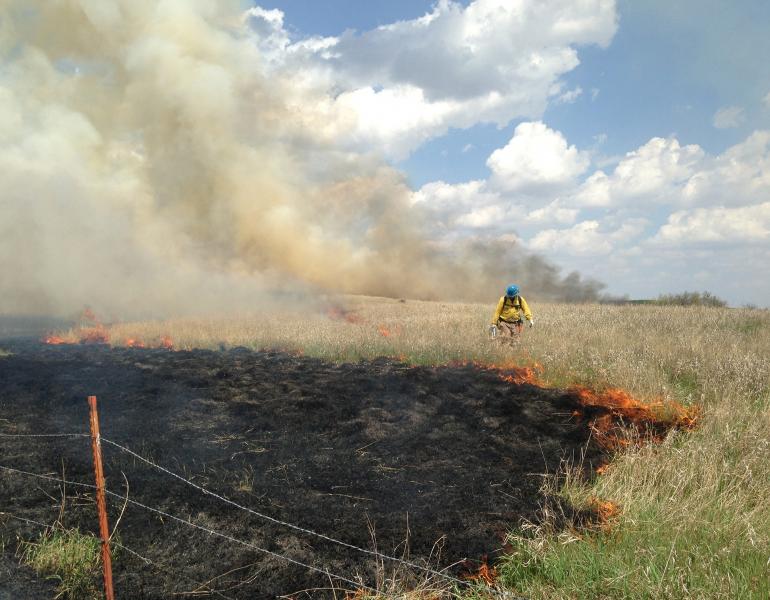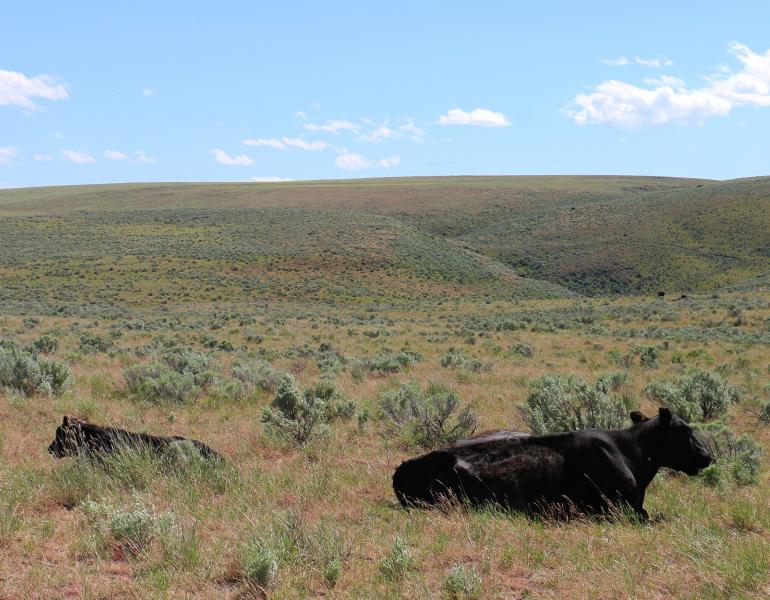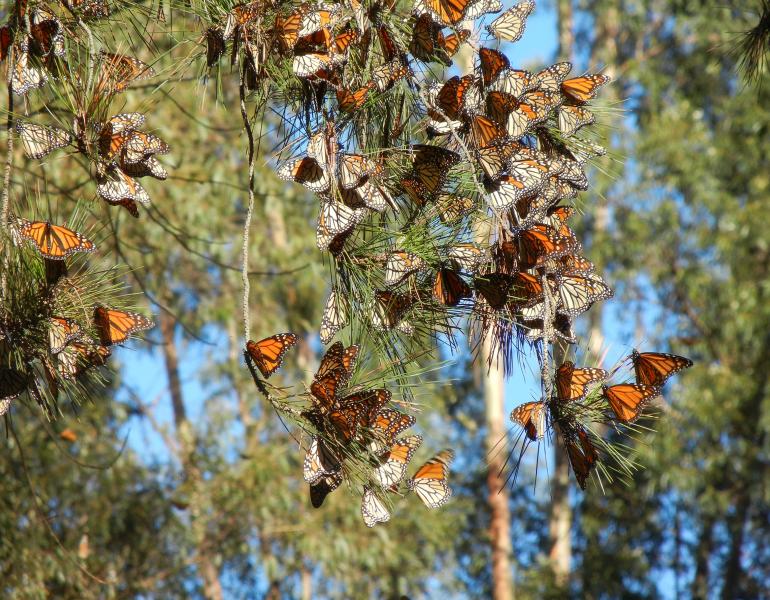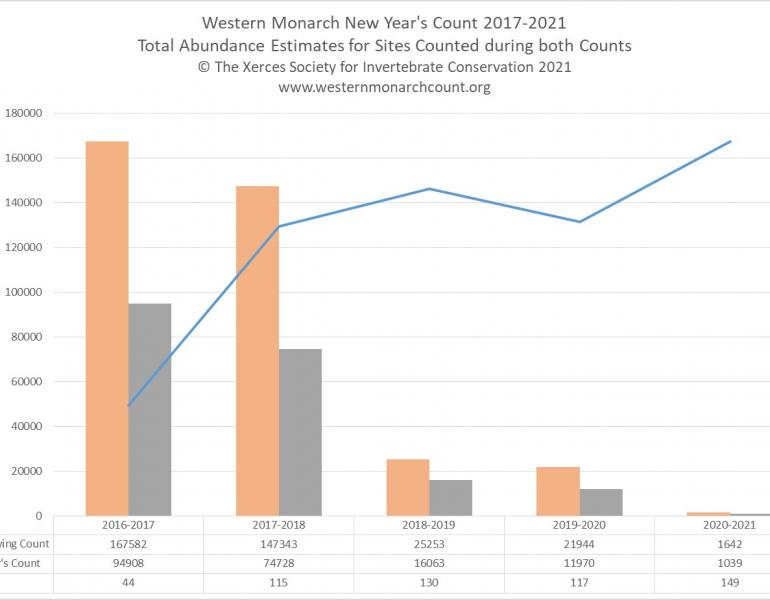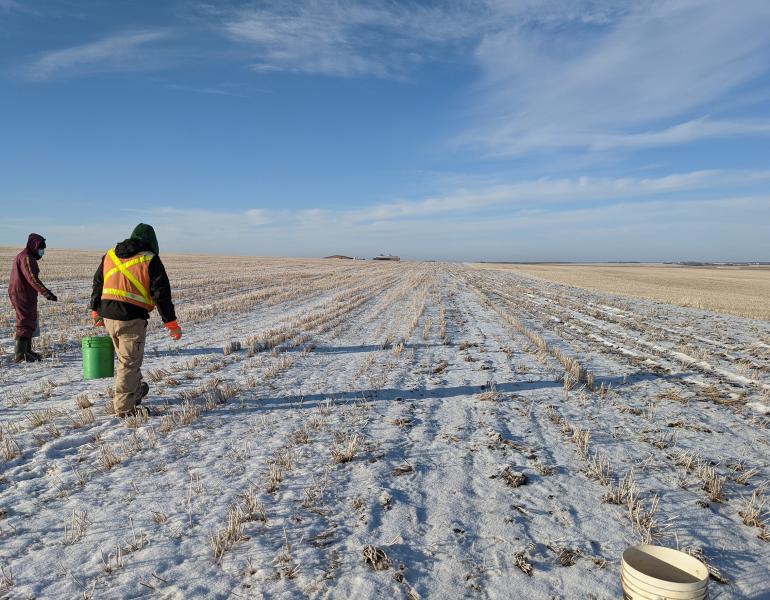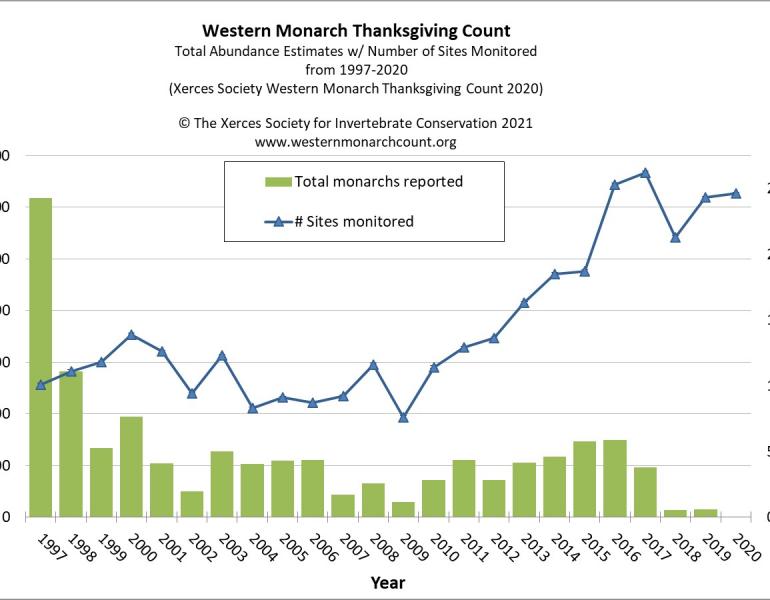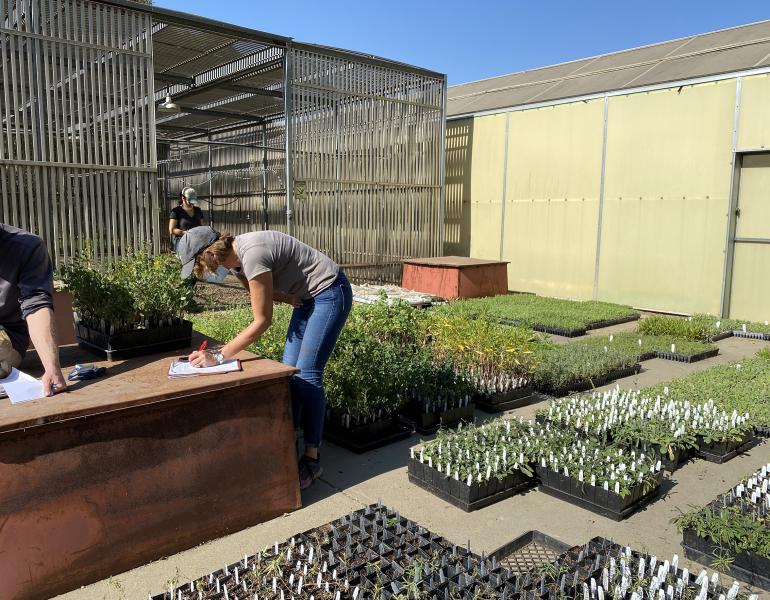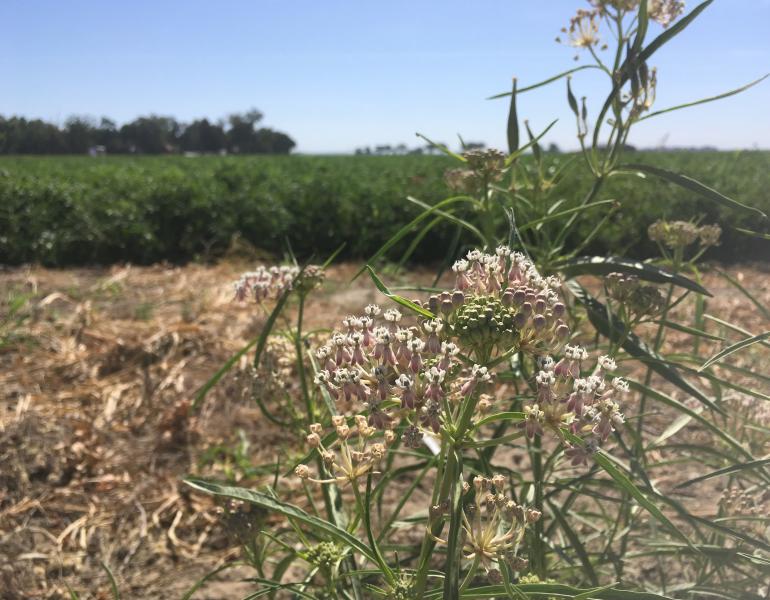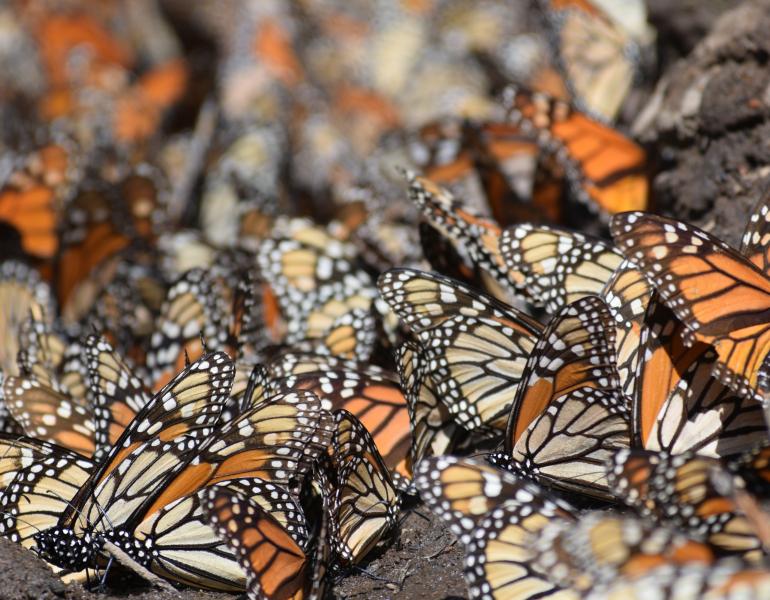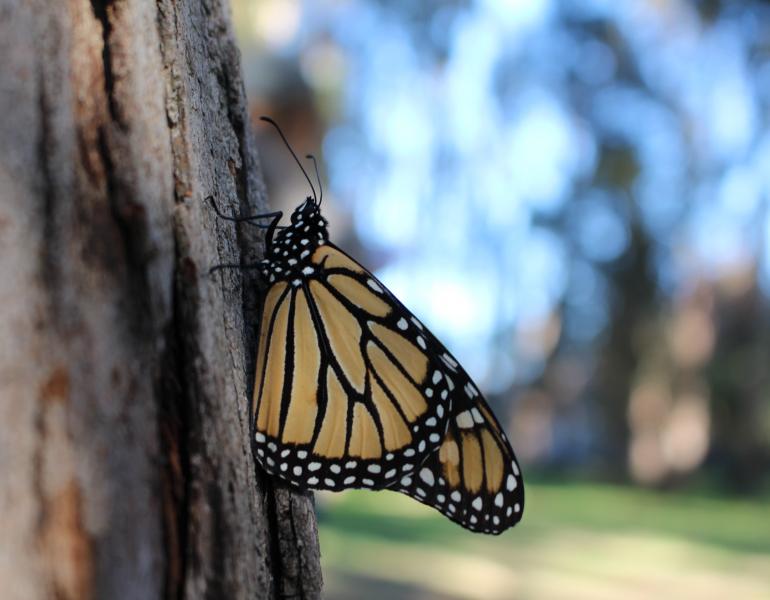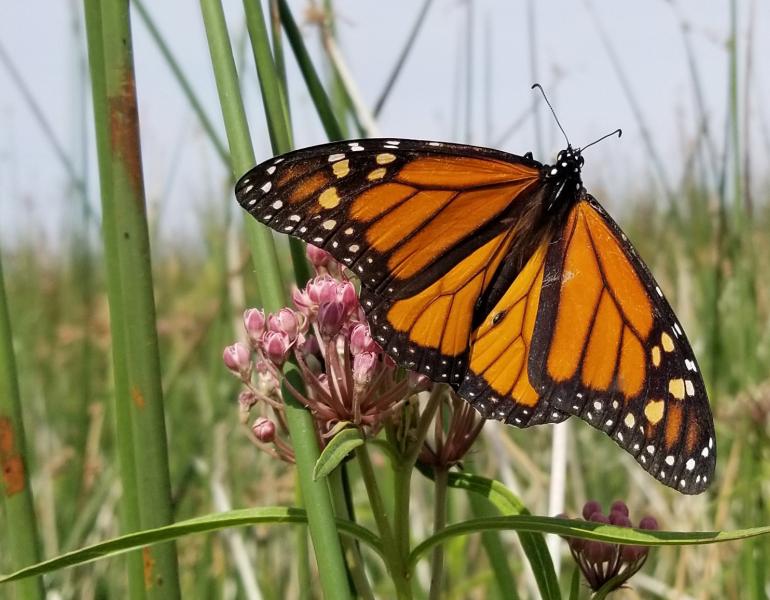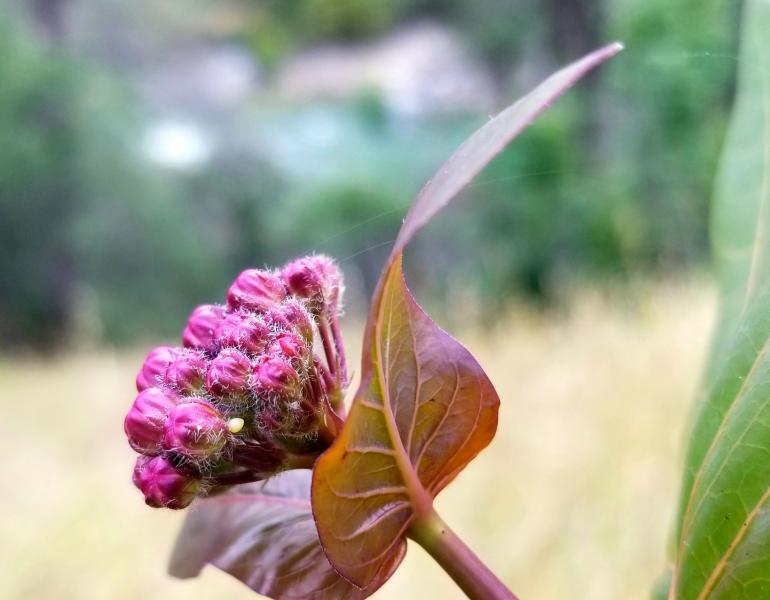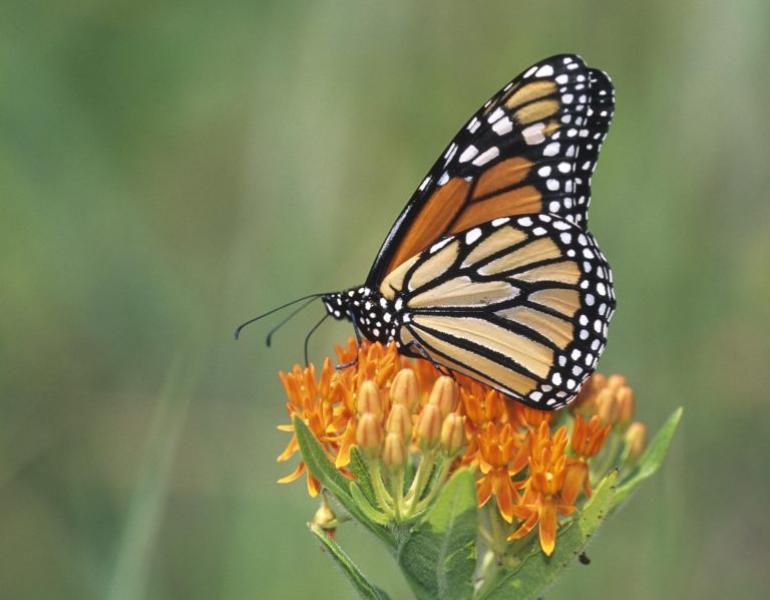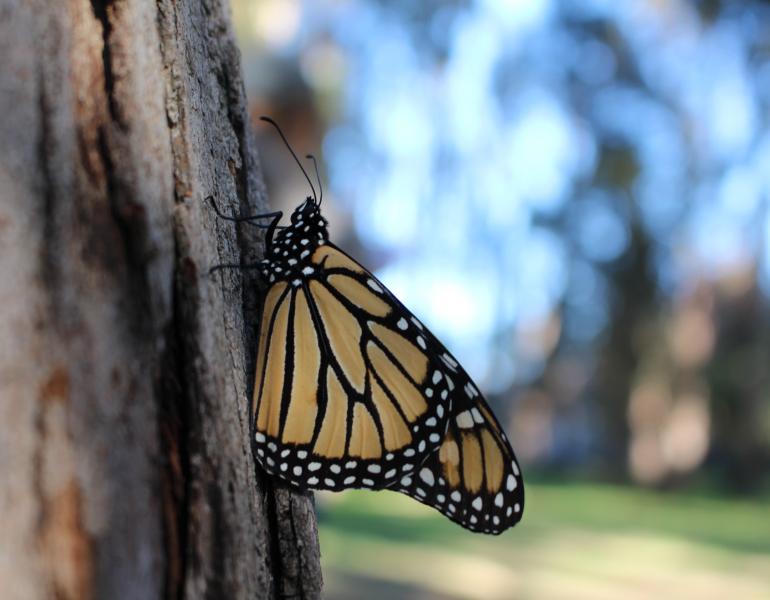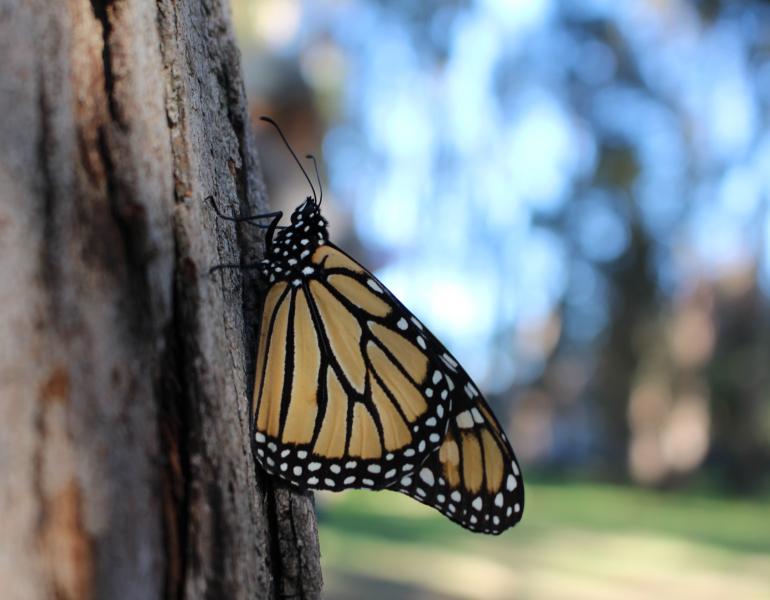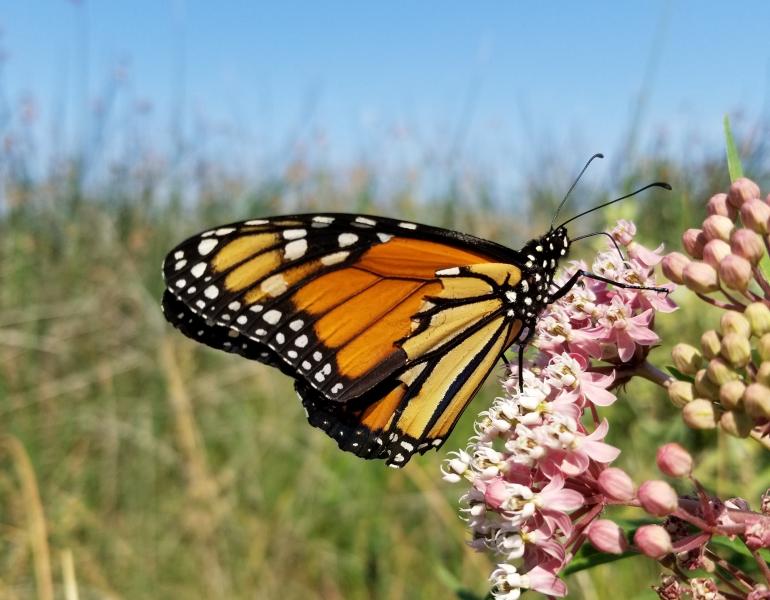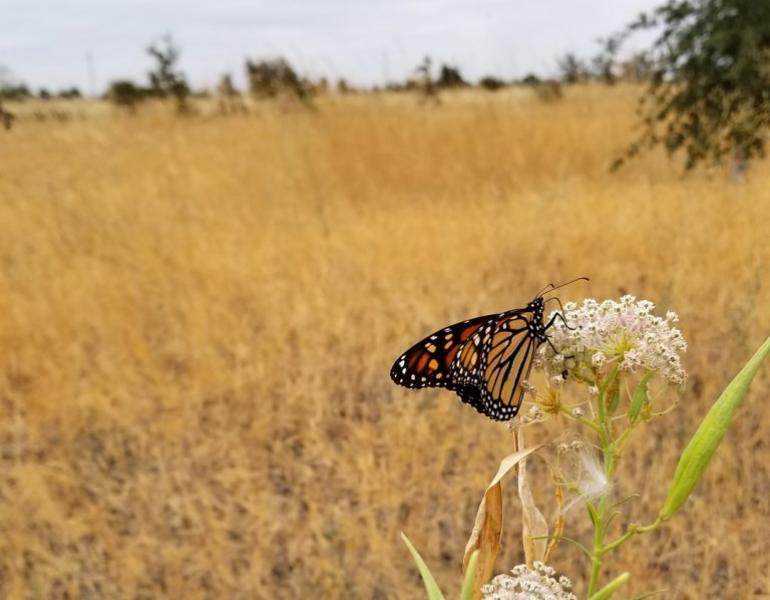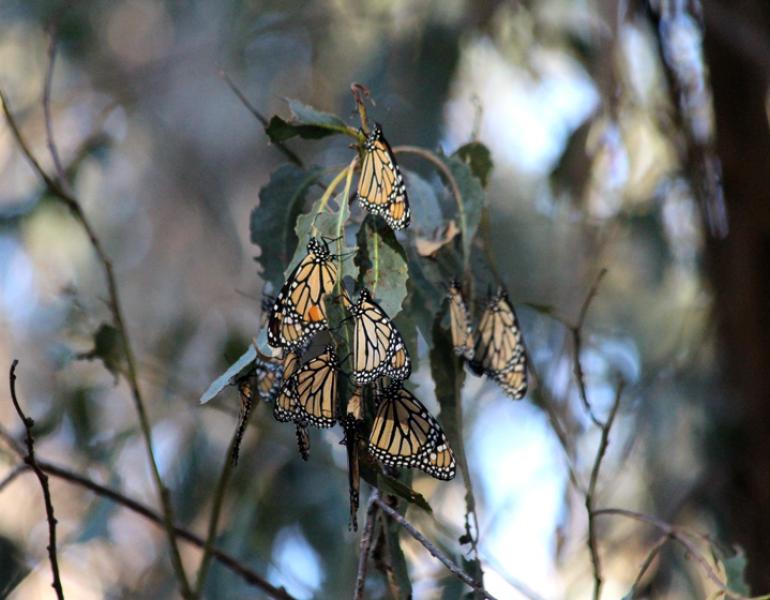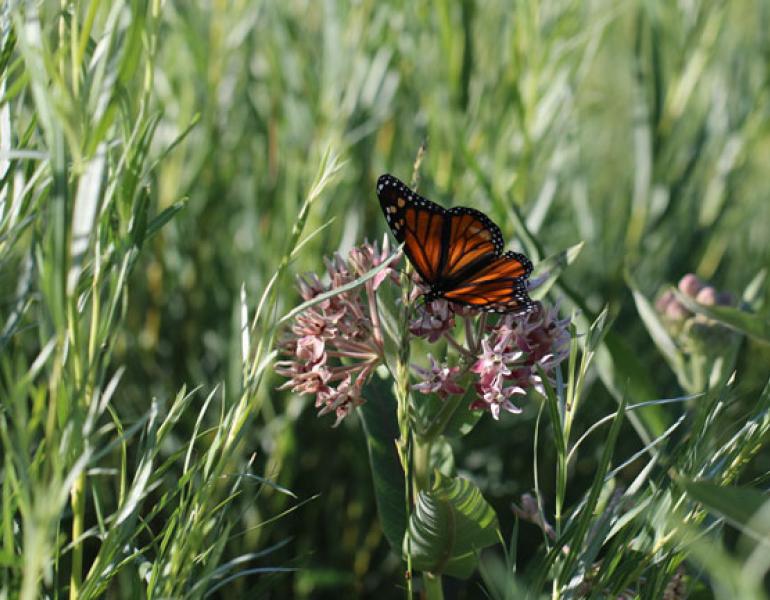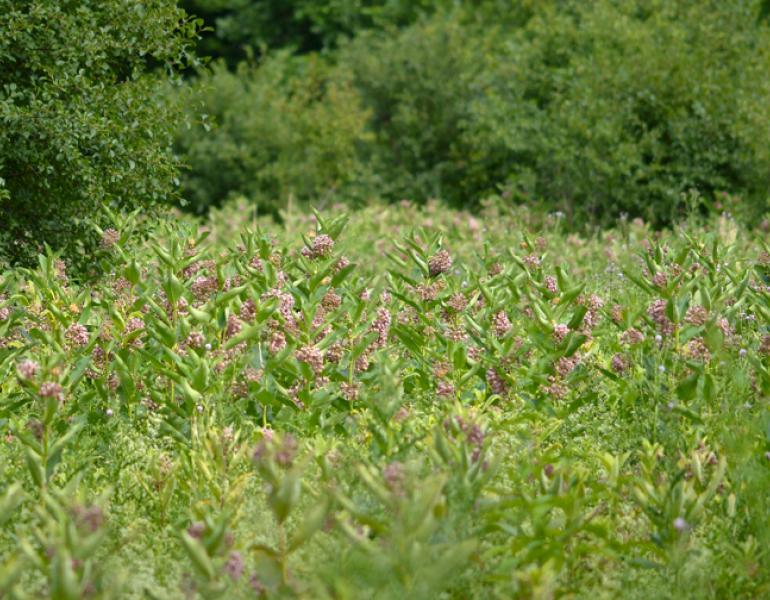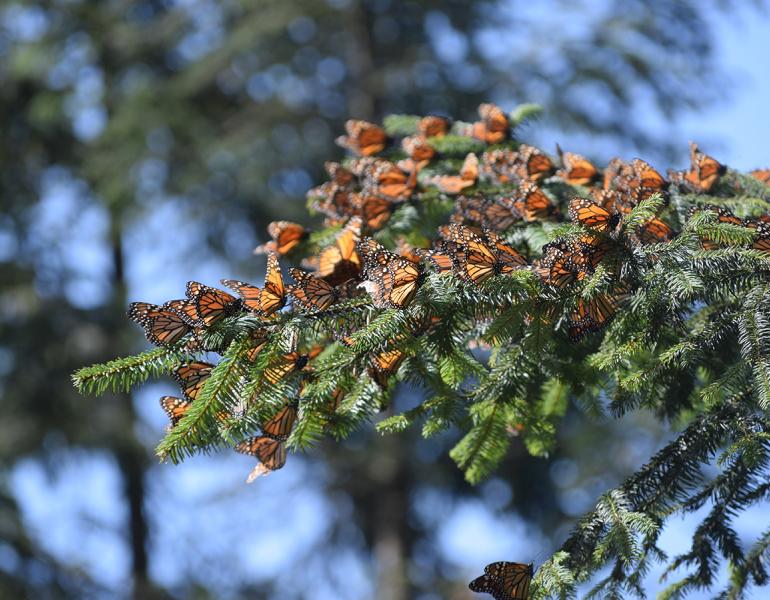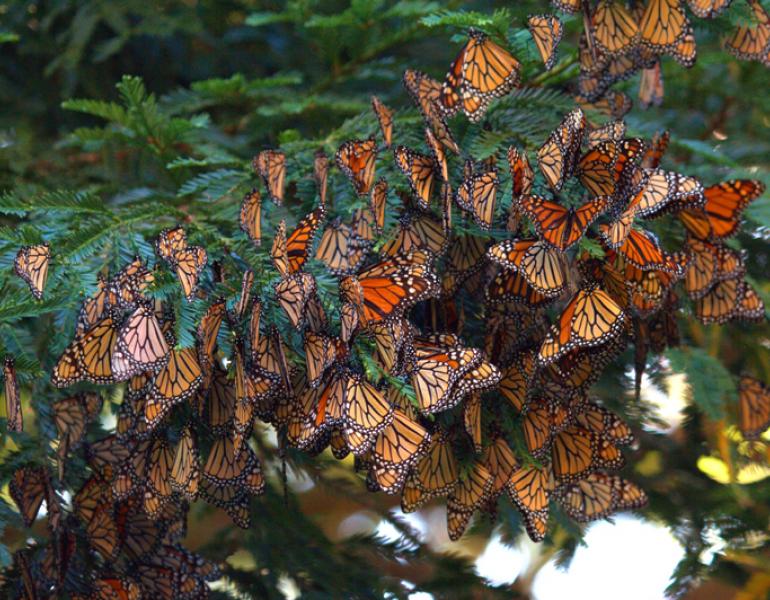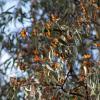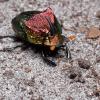A remarkable phenomenon unfolds along the California coast each fall — and you can witness it yourself!
Monarchs
How to Collect Seeds From Milkweed: A Pod and a Plan
Harvesting local milkweed seed for later planting is a great way to increase monarch breeding habitat. We'll teach you how to harvest and separate the fluff from the good stuff.
Keep Monarchs Wild: Why Captive Rearing Isn’t the Way to Help Monarchs
Instead of rearing—which is risky and unproven in helping monarchs—we should focus on more effective, science-backed ways to conserve these glorious wild animals.
Everything You Need to Know About Eastern Monarchs and How to Help Them
Monarch butterflies are famous for their colors and impressive migration. But they don’t all migrate in the same way! Discover what makes the eastern monarch population special.
5 Monarch Migration Facts
A migrating monarch can travel over 100 miles in a single day! Learn more lesser-known yet fascinating facts about the annual North American monarch butterfly migration.
Monarch Butterflies Have Been Proposed for ESA Protection. What Does This Mean?
The U.S. Fish and Wildlife Service has proposed to list the monarch butterfly as a threatened species under the U.S. Endangered Species Act, as announced today in the advance Federal Register. Here's why and what this means for people and monarchs.
Despite a Lower Peak Season, Western Monarchs Start Spring in Higher Numbers than 2023
Migratory western monarchs underwent a 28% seasonal decrease this winter before dispersing from overwintering sites.
South School's Green Ambassadors Raise Awareness for Monarchs
An elementary school in California became a team of inspiring advocates for monarch butterflies last fall and raised nearly $3,000 for Xerces Society.
Growing the Supply of Hard-to-Find Milkweeds
Great Valley Seed shares the process of growing rare but important milkweed species to supply them for the first time.
Why Monarchs Need Early-Season Milkweeds
Western monarchs need milkweed for breeding as soon as they leave their overwintering sites. That's why we partnered on a project to make early-season native milkweed more available in California.
California Garden Center Leads by Example with Monarch Wishing Tree
Each spring a beautiful ficus tree transforms into something extra special for the folks that visit Roger’s Gardens plant nursery. The Monarch Wishing Tree displays hundreds of well wishes written on little wooden butterflies that support conservation.
What is a Monarch’s Favorite Nectar Plant? Scientists are Seeking Your Observations
Xerces scientists are seeking your observations to learn more about adult monarch nectar plant preferences. Our revised system for this community science opportunity has made it easier than ever to submit data about monarch butterflies and the flowers they are nectaring from.
D.C. Monarch Summit Secures Funding for Monarch Conservation
Last week, myself, Sarina Jepsen, and Sarah Hoyle of Xerces joined a two-day Monarch Butterfly Summit at the U.S. Capitol Visitor Center in Washington, DC. Hosted by Oregon Senator Jeff Merkley in collaboration with the Department of the Interior, the event brought together key stakeholders to discuss solutions to reverse the declining monarch butterfly, particularly the western monarch population.
New Year’s Count of Western Monarchs Tracks Population Decline During Overwintering Season
The Western Monarch New Year’s Count serves as a follow-up to the annual Thanksgiving Count to help scientists better understand how the western monarch population changes throughout the overwintering season. Monitoring revealed an average decrease of 38% between the Thanksgiving and New Year’s Counts, within the range of a 36-49% seasonal decline observed over the previous six winters. The overall western monarch population remains higher than in previous years.
Western Monarch Thanksgiving Count tallies nearly 250,000 butterflies
The Xerces Society’s Western Monarch Thanksgiving Count celebrates its 25th year of community science with a surprising and remarkable outcome: 247,237 monarch butterflies observed across western overwintering sites, an over 100-fold increase from last year.
Burning the Land
Fire has been used to manage prairies for centuries, and remains an important tool for grassland managers to reduce woody plant encroachment and increase flower production of key nectar and pollen sources. However, burning entire landscapes is problematic for pollinators, and fire must be used carefully.
Planned Grasshopper Sprays Threaten Monarchs, Bees, Beneficial Insects, and Birds Across Western Rangelands
Rangelands of the western United States are home to many amazing species of wildlife from sage-grouse to butterflies, and frequently used for cattle grazing. A significant proportion of rangelands are publicly owned, so how they are managed, especially when it comes to grasshopper control, is a topic of great concern.
Applying a Holistic Approach to Monarch Conservation
Xerces is a science-based conservation organization and our work on monarchs is no different. Whether it is restoring overwintering sites in California, creating breeding habitat in New York State, or protecting monarchs from pesticides, science informs our actions and maximizes our conservation return.
Resident Monarch Populations on the Rise in California: What Does this Mean for the Western Migratory Population?
Many people have been seeing and reporting fairly large numbers of monarchs, both adults and caterpillars, all winter long in gardens on the California Coast this year. Since there haven’t been any formal studies of the number of monarchs breeding during the winter in California in prior years, it is difficult to know if there is in fact an increase this year, or if people are paying more attention and reporting them more often.
Fifth Annual Western Monarch New Year’s Count Confirms Continued Decline in Western Monarch Population
Now in its fifth year, the New Year’s Count has given us a better understanding of: 1) how monarch numbers may decline at overwintering sites as the winter progresses; 2) how monarchs move between and within sites; 3) when they leave sites; and 4) the level of mortality that adult monarchs may be experiencing during the winter.
Monarch Numbers from Mexico Point to Declining Population
Surveys of monarch butterflies overwintering in central Mexico by World Wildlife Fund–Mexico found that the butterflies occupied an estimated 2.1 hectares of forest during the winter of 2020–21, approximately 26% less than the previous winter. Scientists estimate that 6 hectares are necessary to sustain the population.
Pollinator Conservation Program Digest – February 2021
Our pollinator team members provide regular digests on their work. In this bumper edition, three of our staff provide updates. Stephanie Frischie discusses planting seeds, Nancy Lee Adamson highlights monarch conservation in the Southeast, and Emily May introduces a newly released video.
Western Monarch Population Closer to Extinction as the Wait Continues for Monarchs’ Protection Under the Endangered Species Act
During the 24th Western Monarch Thanksgiving Count, nearly 100 volunteers carefully surveyed groves of trees on the California and Northern Baja coast for monarch butterflies. Despite the challenges of conducting field work during a pandemic, volunteers surveyed 246 sites, three more than last year. Unfortunately, to the surprise and dismay of many, only 1,914 monarchs were counted at all the sites. This is a shocking 99.9% decline since the 1980s.
Pollinator Conservation Program Digest – December 2020
This edition focuses on work done across the country to support monarch butterflies and other pollinators. Jessa Kay Cruz describes how Xerces supports groups in California undertaking habitat creation projects, and Jennifer Hopwood presents a series of fact sheets about milkweeds, part of a nationwide project to provide information to roadside managers.
Planning and Planting for the Future of Monarchs in California
Pismo State Beach is one of the most important overwintering sites for monarchs in California. It has regularly hosted over 10% of the entire western monarch population each winter. Xerces Society has partnered with California State Parks, Creekside Center for Earth Observation, and others to develop and implement a plan to restore and enhance the site’s ability to host monarchs.
Monarch Population in California Spirals to Another Record Low
Early count numbers from Xerces’ Western Monarch Thanksgiving Count suggest that the western migratory population is headed for an all-time low. If early data reflects monitoring at the rest of the sites, we may see fewer than 10,000 monarchs overwintering in California this year.
Western Monarch Breeding Season Status
The western monarch breeding season is coming to a close for 2020 and we are in the midst of the fall migration—the time when monarch butterflies are making the long journey back to their overwintering grounds. Following two years during which the western monarch butterfly population hit the lowest levels ever recorded, researchers were looking for signs of a successful breeding season.
Science Notes: How Pesticide Sampling Can Help Restore Imperiled Western Monarchs
California’s Central Valley is critical breeding habitat for migrating western monarchs. In partnership with the University of Nevada, Reno, Xerces scientists tested milkweeds growing in the valley for pesticides. Sixty-four different pesticides were found across the samples, with an average of nine pesticides per sample.
Migrating Murals
Ink Dwell studio launched the Migrating Mural project in 2012 to celebrate animals that migrate, creating impossible-to-ignore artworks as monuments to the wonders of the natural world.
Monarchs Overwintering in Mexico Down 53%
This decline makes it clear that monarchs are not recovering and still urgently need Endangered Species Act protection in the United States and extraordinary conservation efforts throughout North America. Learn how to help here.
New Year’s Count Finds Continued Decline of Monarchs Overwintering in California
Monitoring revealed an average decrease of 46% between the Thanksgiving and New Year’s counts. While the decline is alarming, the silver lining is that this data has provided a concrete list of priority sites to target for conservation efforts.
The Vanishing Butterfly Groves of California
The latest research suggests that the damage and loss of overwintering habitat is one of the primary drivers of the decline of western monarchs. Together, we can make overwintering site protection and management a reality.
Thanksgiving Count Shows Western Monarchs Need Our Help More than Ever
The western monarch population remains at a critical level. With some luck and a lot of hard work, we have hope that we can save this incredible migration.
Monarch and Pollinator Habitat Kits Designed to Support Imperiled Western Monarchs
These specially designed kits, geared towards large-scale projects, incorporate native milkweeds, nectar plants, and climate considerations.
DeWind Alumnae Publish Three New Research Papers about Monarch Butterflies
Together, these publications contribute to our growing understanding of how human actions can hurt—or help—monarchs.
Western Monarchs: Notes from the Field
Staff from the Xerces Society and our partners have been keeping close eyes on the imperiled western monarch population at study sites in California, Nevada, Oregon, Washington, and Idaho as part of a multi-year collaborative research project.
Pollinator Conservation Program Digest – September 2019
September’s featured staff members have been providing Monarch and Pollinator Habitat Kits to select organizations in California, training Colorado Department of Transportation staff on roadside pollinator habitat, and attending the America’s Grasslands Conference, held this year in North Dakota.
Insects Lose as Trump Administration Weakens the Endangered Species Act
These new regulations will make it much harder to protect and recover the animals that are struggling to survive and need our help the most.
Community Science Powers New Western Monarch Studies
Western monarch researchers and community scientists have been busy, contributing information vital to understanding the situation facing this imperiled population.
Working to Conserve Monarchs from Coast to Coast
The Xerces Society is working across the U.S. to conserve this beloved species, and there are a number of ways you can help!
New iNaturalist Project Makes it Easier to Submit Data to the Western Monarch Milkweed Mapper
We need all hands on deck this season, to better understand the hurdles facing the imperiled western monarch population!
How to Support Monarch Butterfly Conservation—During Earth Week and Beyond!
Helping the monarch back to full health isn’t going to be easy or quick, but together we can transform the landscape to allow the monarch to rebound—and give our children the gift of watching orange wings flap in the sunshine.
Announcing the 2019 DeWind Awardees
The Xerces Society is happy to announce the 2019 DeWind awardees: Niranjana Krishnan, a PhD candidate at Iowa State University, and Molly Wiebush, a master’s student at Florida State University.
Community Scientists Can Help Support Imperiled Western Monarchs
While hiking in California and the rest of the West, you can help researchers by submitting any and all monarch and milkweed observations this year to the Western Monarch Milkweed Mapper website.
Photo Essay: Trinational Monarch Meeting and Exploring Mexico’s Monarch Overwintering Sites
Xerces Society Endangered Species Conservation Biologist and Western Monarch Lead Emma Pelton recounts her recent experience in Mexico with this photo essay.
New Year’s Count of Western Monarchs Confirms Decline, Trends Seen in Previous Years
Overall, the count data revealed an average decrease of 38% between the Thanksgiving and New Year’s counts.
Record Low Number of Overwintering Monarch Butterflies in California—They Need Your Help!
We urge you to join us and our colleagues in the western monarch science and conservation community in taking meaningful, swift action to help save western monarchs.
Early Thanksgiving Counts Show a Critically Low Monarch Population in California
The California overwintering population has been reduced to less than 0.5% of its historical size, and has declined by 86% compared to 2017.
Western Monarch Numbers Expected to Be Low this Year
What can you do to help the monarch? Protect habitat, avoid pesticide use, plant gardens, and contribute data to Xerces-led community science efforts.
The Striking Beauty of Oklahoma’s Butterflies
Oklahoma’s impressive butterfly fauna of more than 170 species includes the nation’s largest and the smallest, and representatives of all six major butterfly families.
Lincoln Brower: A Life Well Spent
Remembering a ground-breaking monarch researcher, a passionate advocate for monarchs, and a beloved member of the conservation community.
Managing for Monarchs in the West
A new guide to protecting the monarch butterfly from the Pacific to the Rockies presents a holistic approach to monarch conservation.
10 Ways to Celebrate Earth Day
Here are some ways you can work to promote a healthy planet for invertebrates and the people they let share their planet.
Tropical Milkweed—a No-Grow
Milkweed is in demand, and that demand has been filled in recent years by tropical milkweed, a non-native species. But is planting tropical milkweed potentially doing more harm than good?
Second New Year's Count Supports Monarchs' Movement Between Sites
The Xerces Society's Western Monarch Thanksgiving Count provides a long-running record of the number of monarchs overwintering in California-including the steep decline of recent decades.
Newly Released Monarch Overwintering Site Management Plan Provides Blueprint for Protecting and Managing Monarch Groves
This western monarch butterfly overwintering site management plan also serves as a template for land managers at other overwintering sites.
Very Low Numbers of Monarchs Overwintering in California may Reflect an Unusual Fall
Unusual fall weather may have contributed to the lowest overwintering western monarch population recorded since 2012.
1.3 Billion Stems of Milkweed Needed in Midwest to Recover Monarch Population
A new study from the USGS, Univ. of Arizona, and partner organizations finds 1.3 additional milkweed stems are needed in the Midwestern U.S. to recover monarch butterfly populations.
2017 Monarch Numbers Are Down, Lengthening a Worrying Trend
A documented 74% decline in the California overwintering population since the late 1990s mirrors the steep decline, estimated at 80–90%, of the number of butterflies in Michoacán over the same period.
Western Monarch Conservation: A 40 Year History
For 40 years, the monarch migration phenomena has been recognized as a conservation priority.
To Save Monarchs, We Need More than Just Milkweed
Adult monarchs need nectar to fuel them during spring migration and breeding and to build up stores of fat which sustain them during fall migration and winter.
Monarch Butterflies in the Western United States
Much of the focus on monarch butterflies is on the eastern population. Monarchs in western North America are in greater decline and need conservation help.

